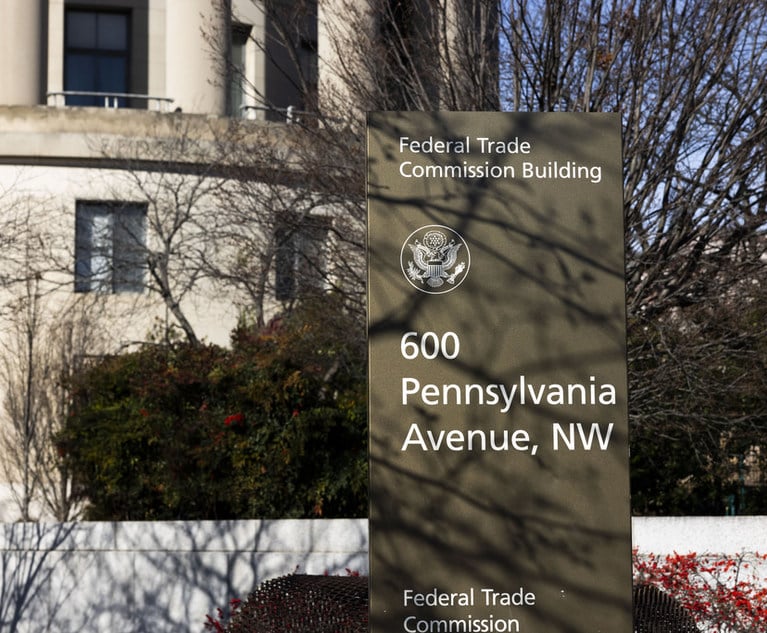NCOIL Rethinking Market Conduct Model
|Lack of adoption by states sends legislators, regulators back tothe drawing board
|The National Conference of Insurance Legislators has agreed toreconsider its model law for market conduct surveillance afterindustry officials pointed out at NCOIL's recent annual meetingthat state legislatures have not adopted their plan.
|Insurer groups were pleased. "I think this is a good stepforward," said David Snyder, assistant general counsel of theAmerican Insurance Association. "The current model as such has yetto gain any acceptance in the states and has failed with respect tomeeting market conduct concerns."
|Both the National Association of Insurance Commissioners andNCOIL jointly adopted the current model in the summer of 2004 aftertwo years of debate that left neither side happy. At the time, theleadership of both groups made a strong push for joint sponsorshipto impress federal lawmakers that state regulation could remainviable in the face of industry concerns that the patchwork natureof 50 sets of state laws made companies uncompetitive.
|Earlier that year, Rep. Mike Oxley, R-Ohio, who chairs the HouseFinancial Services Committee, proposed legislation calling forfederal preemption of state laws to nationalize insuranceregulation, and state regulators and lawmakers seemed eager to getwith that program, known as the State Modernization and RegulatoryTransparency (or SMART) Act. Since then, both groups have eithercome out against or expressed strong reservations about SMART,which is off the Congressional front burner.
|The question now is whether state lawmakers and regulators willgo their separate ways in terms of a model law, or again try tohammer out a compromise for the sake of uniformity.
|Texas, under the leadership of State Rep. Craig Eiland,D-Galveston, has adopted a market conduct model law that is viewedby the industry even more favorably than the original NCOILproposal, which was modified to meet regulator objections. "I thinkwhat we will now do is take a look at the original NCOIL model lawand bring some form of that back for discussion in March," saidPaul Donohue, who serves as NCOIL's federal liaison inWashington.
|Rep. Eiland, who is also NCOIL's outgoing president, said nextyear could serve as an opportunity to see how effective theindustry-backed reforms will be in modernizing the market conductprocess.
|A uniform market conduct model law was only one facet of anoverall reform of the process that included reliance on market datatrends, rather than traditional periodic exams, and greatercoordination among states over the exams.
|Oregon Insurance Administrator Joel Ario–who served as point manfor two years on the market conduct reform process for theNAIC–said he believed most state insurance departments had theauthority to institute such reforms, regardless of any overallmarket conduct law, and was therefore not discouraged that thewhole process was opening up again. As to whether he will onceagain attempt to forge a compromise between the two groups, he saidhe would have to talk to his counterparts from other states to seeif that effort would be worthwhile.
|The NCOIL decision to review the market conduct issue camedespite a letter of opposition from a consumer advocate.
|Birny Birnbaum, executive director of the Austin, Texas-basedCenter for Economic Justice, wrote NCOIL that his group viewedproposed changes to the NCOIL/NAIC Market Conduct Model Law as "anaggressive attack against consumer protection that severely limitsregulators' ability to protect insurance consumers from marketconduct abuses."
|"We not only oppose the proposed changes, but we will be askingthe NAIC to withdraw its accreditation of Texas because of thatstate's passage of this law," he added.
|"The law passed by Texas, which Rep. Eiland wants to make into anational model, leaves…Texas…with an inadequate regulatoryframework to carry out its responsibilities to protect insuranceconsumers and, consequently, should no longer be recognized with anaccreditation that suggests otherwise," he wrote.
|Former NAIC president Ernst Csiszar was the driving force behindthe joint NAIC-NCOIL model, urging the compromises needed to makethe document palatable to both sides to impress federal lawmakers.But since then he resigned his post to assume the presidency of theProperty Casualty Insurers Association of America, which is one ofthe main proponents of going back to the original NCOILdocument.
|Mr. Csiszar was succeeded as NAIC president by PennsylvaniaCommissioner Diane Koken, who has taken a much dimmer view of theSMART process and has come under fire from federal lawmakers forher seeming disinterest in the process.
|Flag: The Skinny
|Head: What's At Stake?
|Among the issues at stake in the effort to promote a new modellaw for market conduct surveillance, according to the AIA's DavidSnyder, are:
|o How much should each state defer to other states' marketconduct examinations and conclusions?
|o How confidential should market conduct resultsremain–particularly from the plaintiff's bar, who could use them aslawsuit fodder?
|o How much discretion should state regulators have in marketconduct investigations?
Want to continue reading?
Become a Free PropertyCasualty360 Digital Reader
Your access to unlimited PropertyCasualty360 content isn’t changing.
Once you are an ALM digital member, you’ll receive:
- All PropertyCasualty360.com news coverage, best practices, and in-depth analysis.
- Educational webcasts, resources from industry leaders, and informative newsletters.
- Other award-winning websites including BenefitsPRO.com and ThinkAdvisor.com.
Already have an account? Sign In
© 2024 ALM Global, LLC, All Rights Reserved. Request academic re-use from www.copyright.com. All other uses, submit a request to [email protected]. For more information visit Asset & Logo Licensing.








